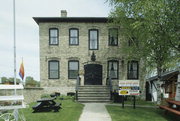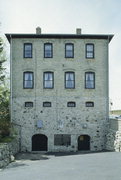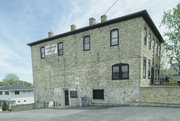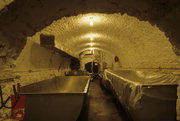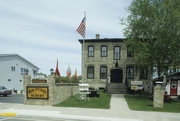Property Record
115 NAVARINO ST
Architecture and History Inventory
| Historic Name: | AHNAPEE BREWERY |
|---|---|
| Other Name: | VON STIEHL WINERY |
| Contributing: | |
| Reference Number: | 26542 |
| Location (Address): | 115 NAVARINO ST |
|---|---|
| County: | Kewaunee |
| City: | Algoma |
| Township/Village: | |
| Unincorporated Community: | |
| Town: | |
| Range: | |
| Direction: | |
| Section: | |
| Quarter Section: | |
| Quarter/Quarter Section: |
| Year Built: | 1869 |
|---|---|
| Additions: | |
| Survey Date: | 1975 |
| Historic Use: | brewery |
| Architectural Style: | Italianate |
| Structural System: | |
| Wall Material: | Brick |
| Architect: | |
| Other Buildings On Site: | |
| Demolished?: | No |
| Demolished Date: |
| National/State Register Listing Name: | Ahnapee Brewery |
|---|---|
| National Register Listing Date: | 6/17/1994 |
| State Register Listing Date: | 1/21/1994 |
| National Register Multiple Property Name: |
| Additional Information: | A 'site file' exists for this property. It contains additional information such as correspondence, newspaper clippings, or historical information. It is a public record and may be viewed in person at the State Historical Society, Division of Historic Preservation. In September 1869, Bohemian-born Wojta Stransky built the Ahnapee Brewery for this community of largely Bohemian and German immigrants. Within six months, his brewmaster was producing 125 barrels of beer per week. A decade later, Henry Schmiling, a Pomeranian immigrant, expanded the brewery’s distribution network, making deliveries as far away as Door County, reached by boat in summer and by sleigh in winter. When railroad connections in the 1890s opened the brewery’s local market to devastating competition from larger breweries in Green Bay, Ahnapee Brewery closed in 1894. For some time after it was constructed, the brewery remained the only large brick building in Algoma. Overlooking rustic fishing shanties along the Ahnapee River, the brewery typified the manufacturing and warehousing architecture of its day. A low-pitched hipped roof with boxed eaves shelters walls of cream brick. Windows are arranged symmetrically around a set of carved wooden double doors (replacements for the originals), and segmental arches with prominent drip moldings crown each opening. The building's most distinctive features are found inside. In the cavernous sub-basement, where the brewer aged the beer in as many as two hundred wooden kegs, fieldstone walls rise up to form barrel-vaulted ceilings. These are fashioned from regularly coursed stones, which become smaller in width as they approach the top. In 1967, Charles Stiehl restored the original roof and its ten small chimneys to create Wisconsin’s first licensed winery. To comply with health codes, Stiehl installed concrete floors and whitewashed the stone walls in the levels below grade. Today, the family-operated business is a popular tourist attraction. After the brewery closed in the 1890s, the structure at various times served as a warehouse, fly net factory, gas-powered washing machine factory, and feed storage facility. SEGMENTAL ARCHED WINDOWS. MULTIPLE CHIMNEYS. |
|---|---|
| Bibliographic References: | MANITOWOC HERALD TIMES REPORTER 8/5/1994. KEWAUNEE ENTERPRISE 9/15/1994. Historic Algoma Walking Tour Volume II, Community Improvement of Algoma Main Street Program, 2008. Buildings of Wisconsin manuscript. |
| Wisconsin Architecture and History Inventory, State Historic Preservation Office, Wisconsin Historical Society, Madison, Wisconsin |

